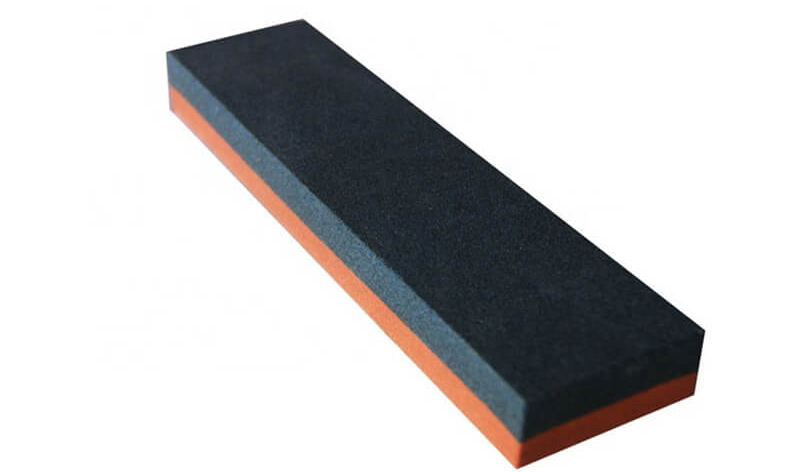A sharp knife is an essential tool in any kitchen, but over time, the blade can become dull and lose its cutting edge. While there are various methods to sharpen a knife, using a sharpening stone is considered a traditional and effective technique. In this comprehensive guide, we will walk you through the step-by-step process of sharpening a knife with a sharpening stone. By mastering this skill, you can restore your knives to their optimal sharpness and enjoy a safer and more efficient culinary experience.
Understanding Sharpening Stones
Before diving into the sharpening process, it’s important to understand the different types of sharpening stones available. The three most common varieties are oil stones, water stones, and diamond stones. Each type has its own characteristics, such as the grit size and material composition, which affect the sharpening process. Oil stones require lubricating oil to be effective, while water stones need to be soaked in water before use.
Gathering the Necessary Tools
To begin sharpening your knife, gather the following tools:
- Sharpening stone(s): Choose a stone with a grit appropriate for your needs. Coarse gritsharpening stones, such as 200-400, are ideal for repairing damaged edges, while medium grit sharpening stones (800-1200) and fine (2000-3000) grit sharpening stones are suitable for regular maintenance and refining the edge.
- Honing guide (optional): A honing guide helps maintain the angle and consistency of your sharpening strokes, especially if you’re a beginner.
- Lubricant: If you’re using an oil stone, you’ll need a suitable lubricating oil. For water stones, plain water is sufficient.
Preparing the Stone
For water stones, submerge them in water for the recommended time, typically around 10-15 minutes. Oil stones, on the other hand, require a few drops of lubricating oil to be applied evenly across the surface. Make sure the stone is secure on a non-slip surface, such as a damp towel, to prevent any accidents during sharpening.
How to Sharpen a knife with a Sharpening Stone
Follow these steps to sharpen your knife effectively:
- Determine the sharpening angle:Most kitchen knives have a bevel angle of 15-20 degrees per side. If you’re unsure about the angle, consult the manufacturer’s recommendations or maintain the existing angle.
- Establish a consistent grip:Hold the knife handle firmly with your dominant hand, keeping your fingers away from the blade. Use your other hand to stabilize the knife on the stone.
- Starting with the coarse grit: Place the blade against the stone at the chosen angle, with the edge in contact with the stone. Apply gentle pressure and move the blade across the stone in a sweeping motion, maintaining the angle consistently. Start at the base of the blade and work towards the tip, ensuring the entire edge receives equal attention. Repeat this motion 8-10 times on each side of the blade.
- Checking progress:Periodically examine the edge for burrs, which are tiny metal shavings that form as you sharpen. To check for burrs, lightly run your finger across the blade’s side, perpendicular to the edge. If you feel a rough or raised area, continue sharpening until the burr is eliminated.
- Transitioning to a higher grit: Once you are satisfied with the edge created by the coarse grit, rinse or wipe the knife clean and repeat the process with the next grit stone. This progression allows you to refine the edge further.
- Honing the edge: After reaching the desired sharpness with the finer grit stone, you can use a leather strop or a honing rod to further refine the edge and remove any remaining burrs. This step helps achieve a razor-sharp finish.
Conclusion
Sharpening a knife with a sharpening stone is a skill that every aspiring chef or home cook should master. By following the step-by-step guide outlined above, you can restore the sharpness of your knives and prolong their lifespan. Remember to choose the appropriate grit size for your sharpening needs and maintain a consistent angle throughout the process.
Regular knife maintenance and sharpening not only enhance the performance of your blades but also ensure safety in the kitchen. Dull knives require more force to cut, increasing the risk of accidents. Therefore, investing time in mastering the art of sharpening will pay off with improved efficiency and precision in your culinary endeavors.
It’s worth noting that practice is key to becoming proficient at knife sharpening. Start with inexpensive knives or old blades until you gain confidence in your technique. With time, patience, and the right tools, you can elevate your culinary skills and enjoy the pleasure of effortlessly slicing through ingredients with a finely sharpened knife.


